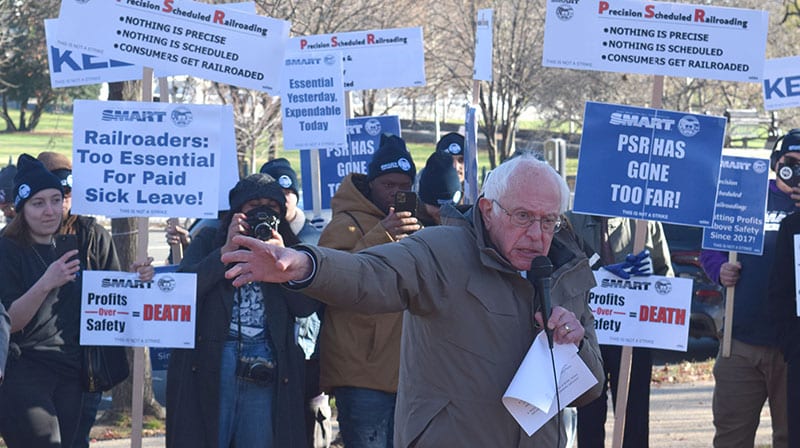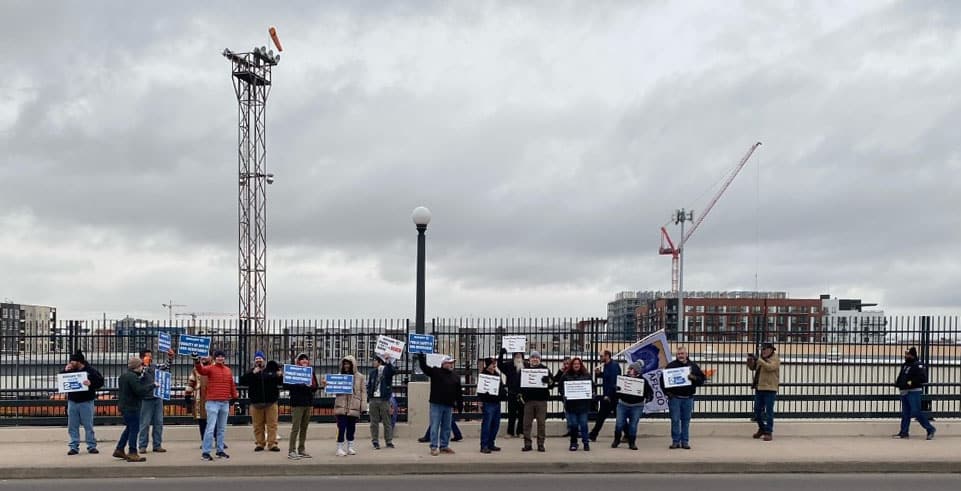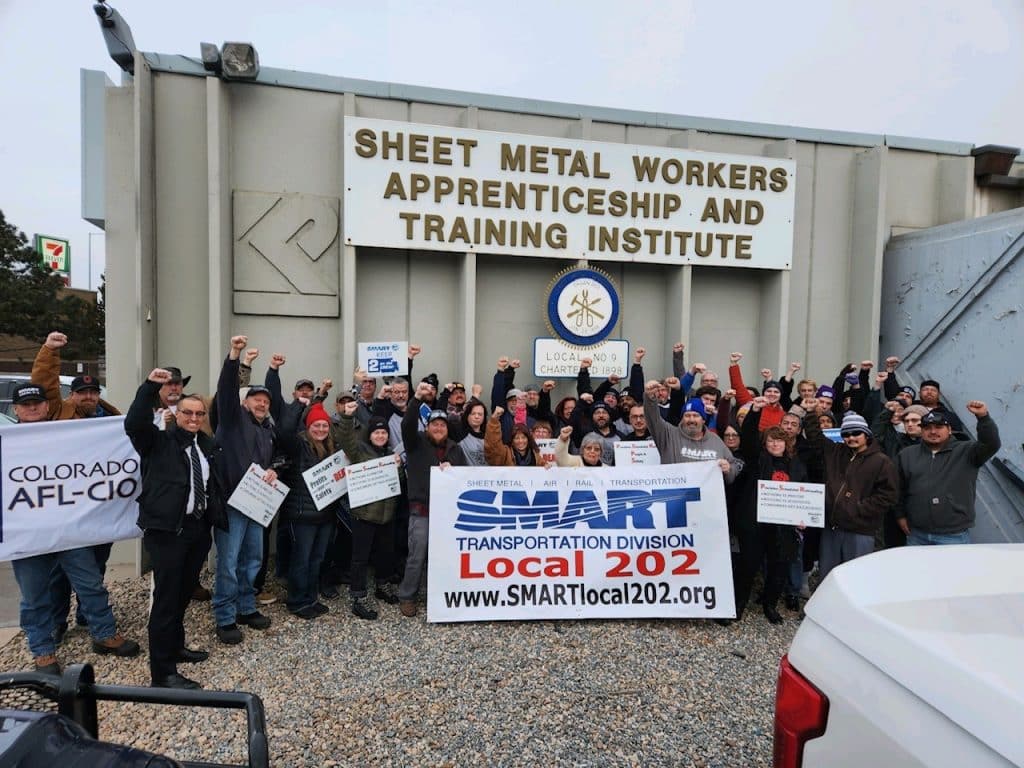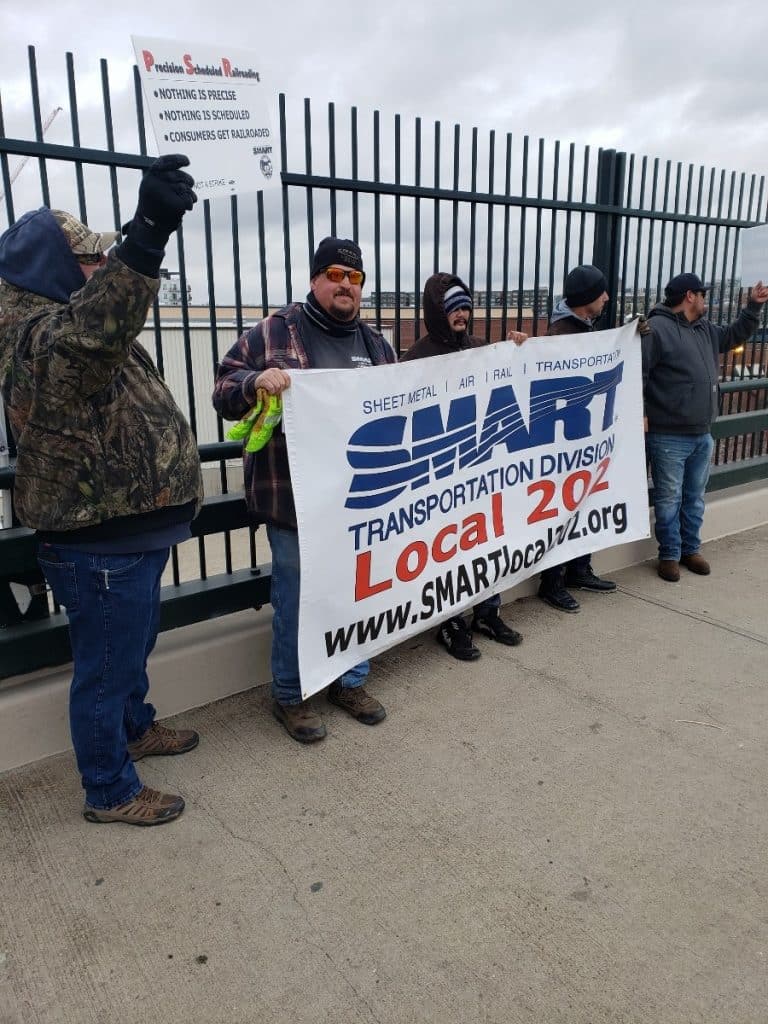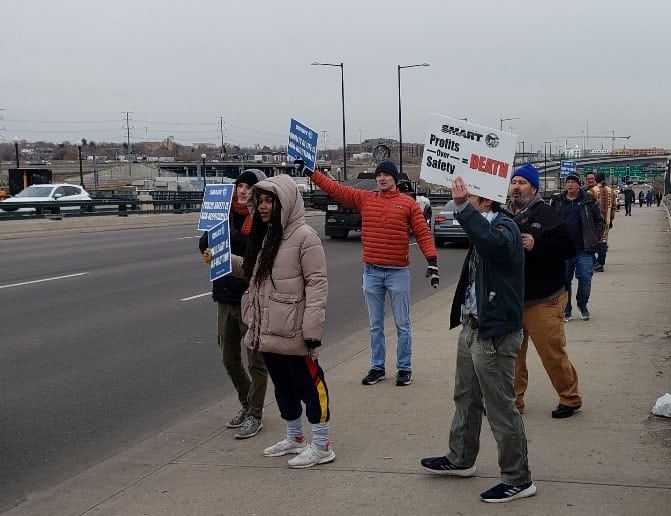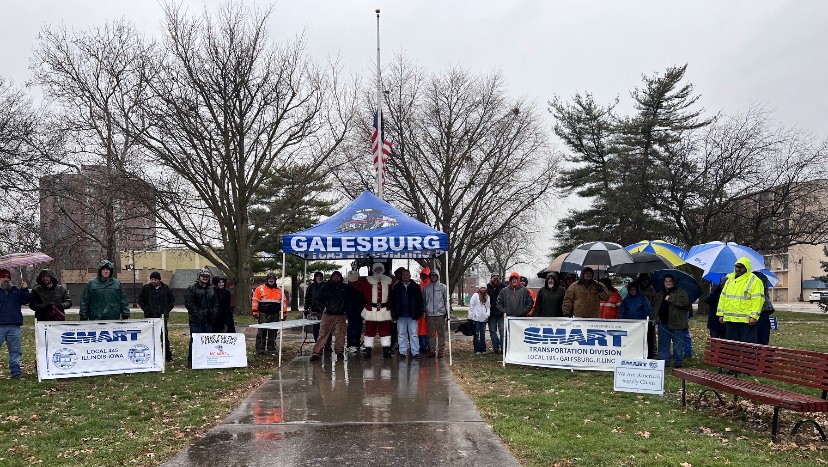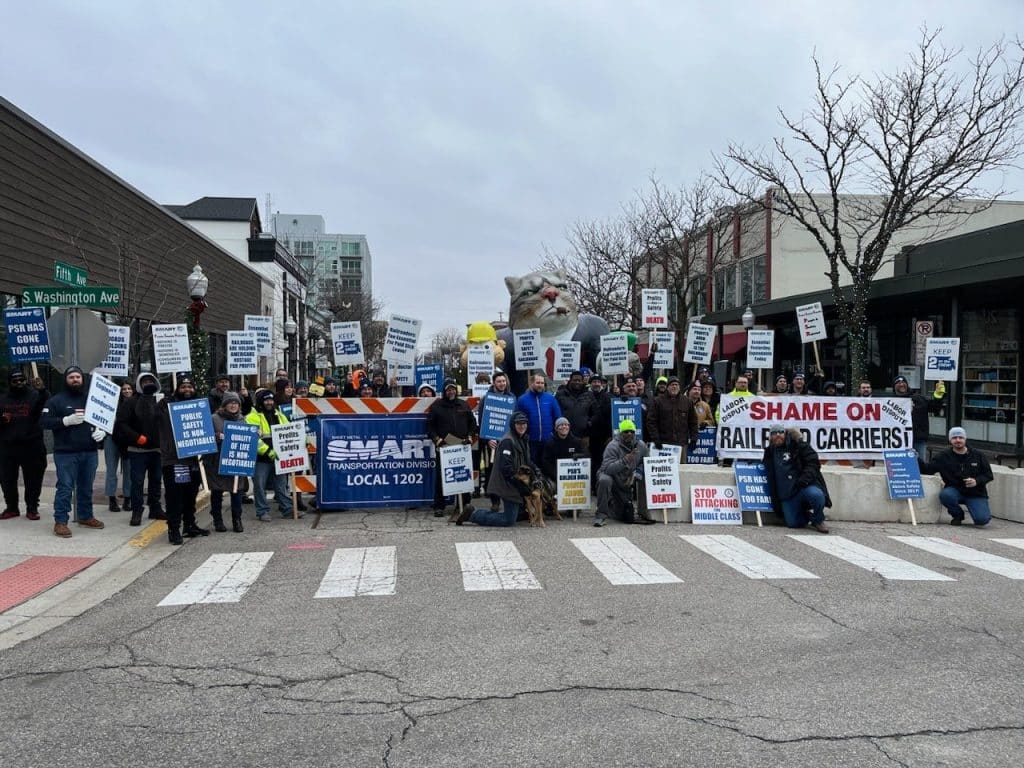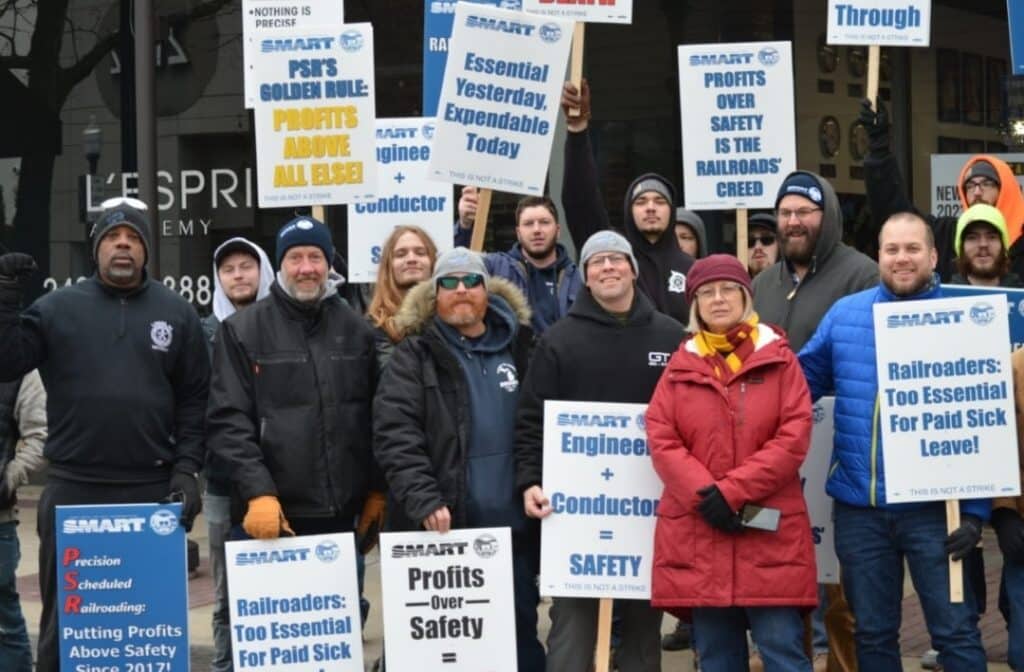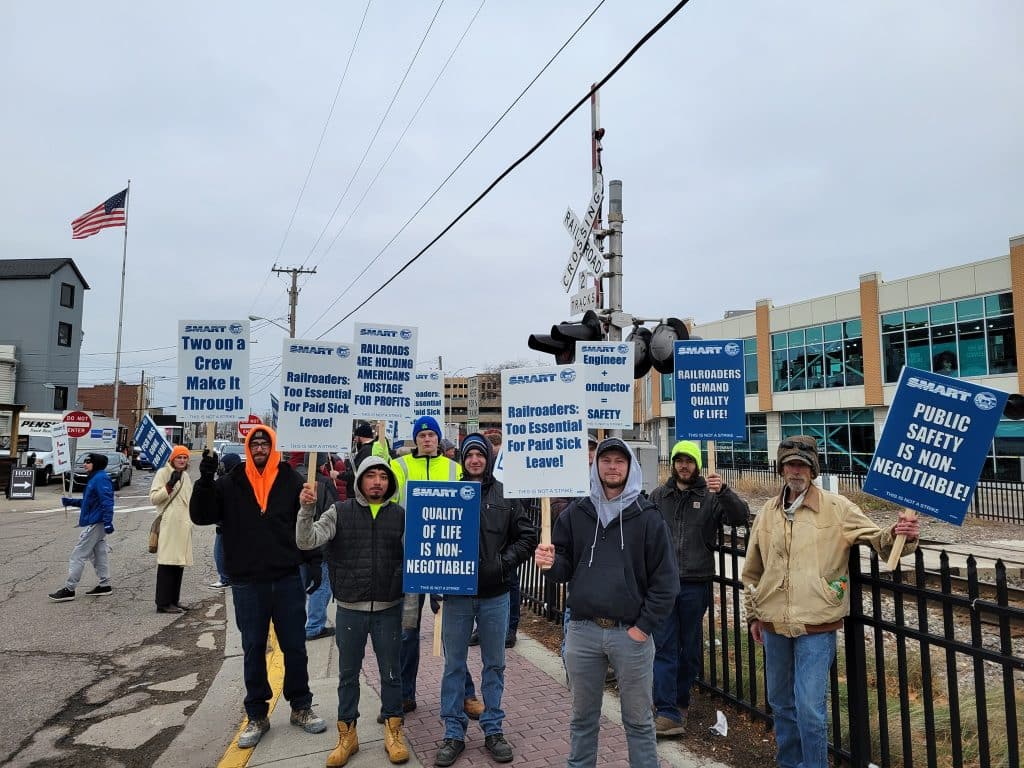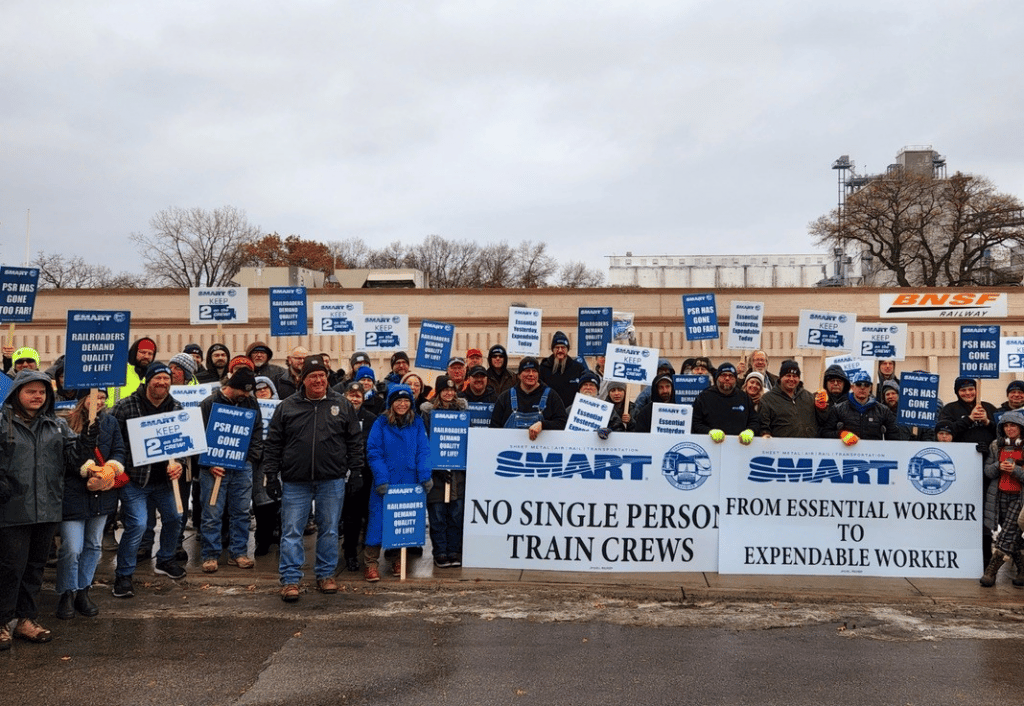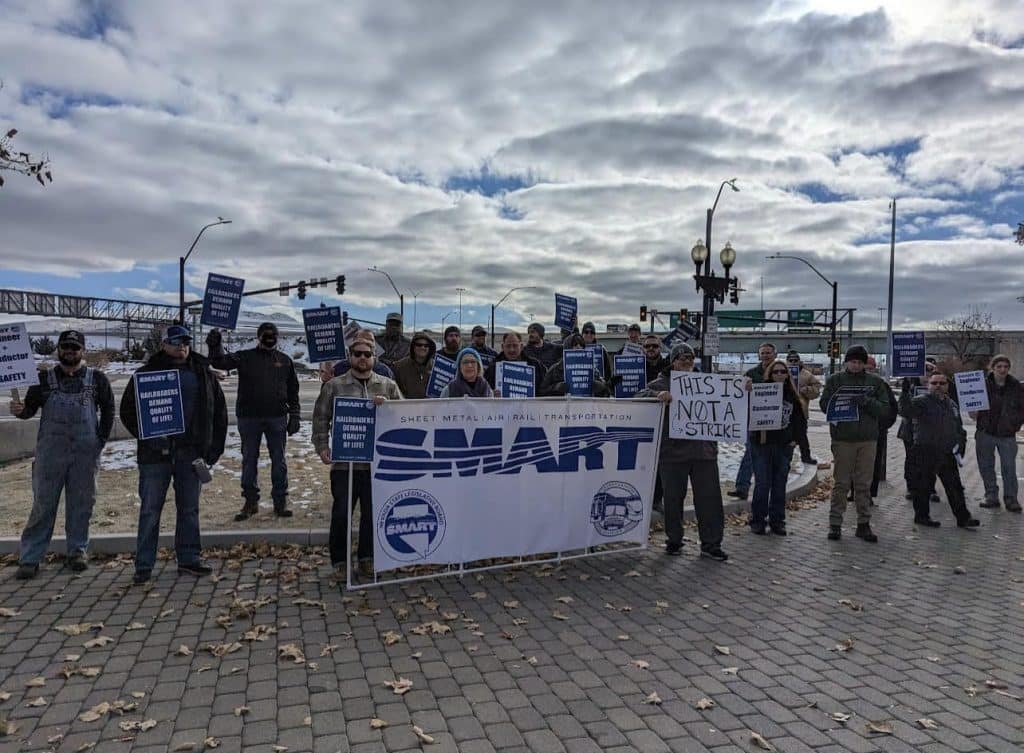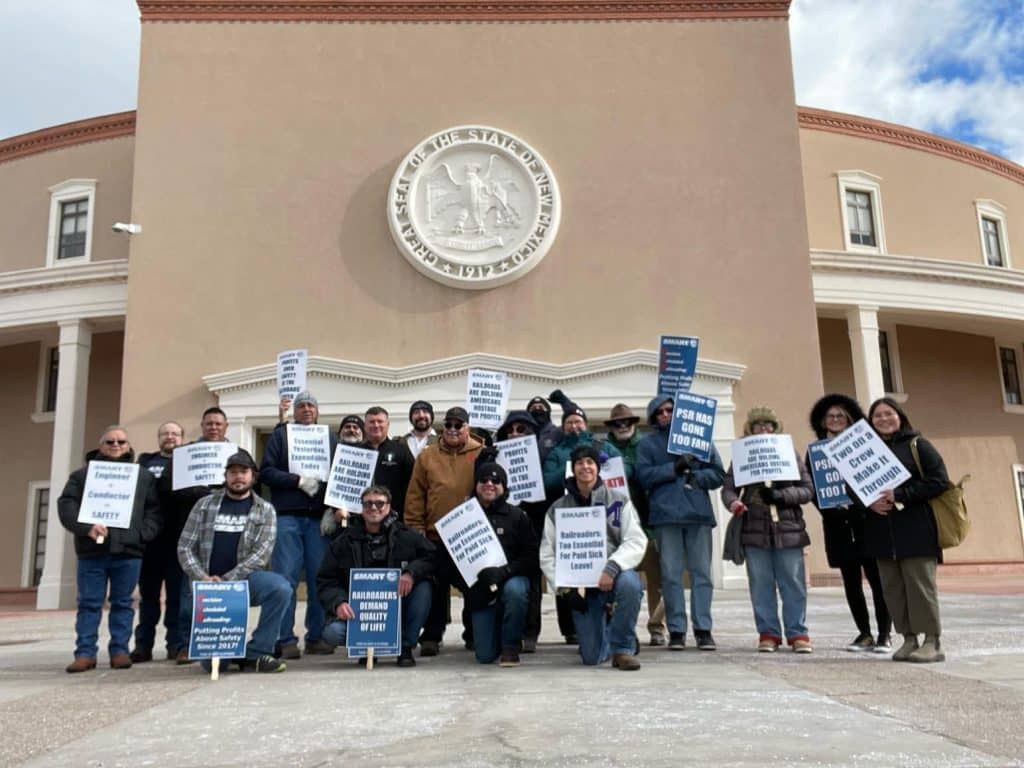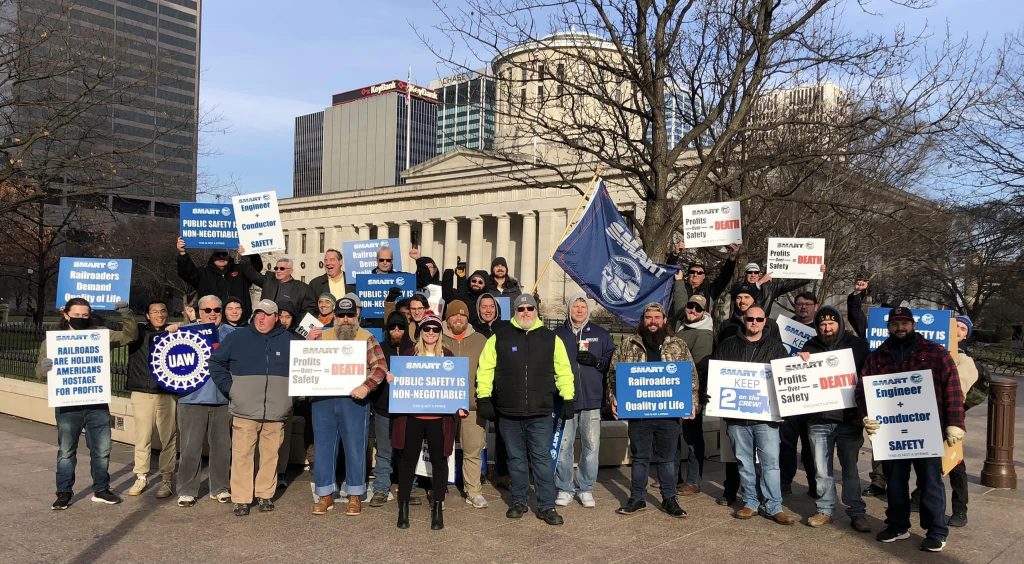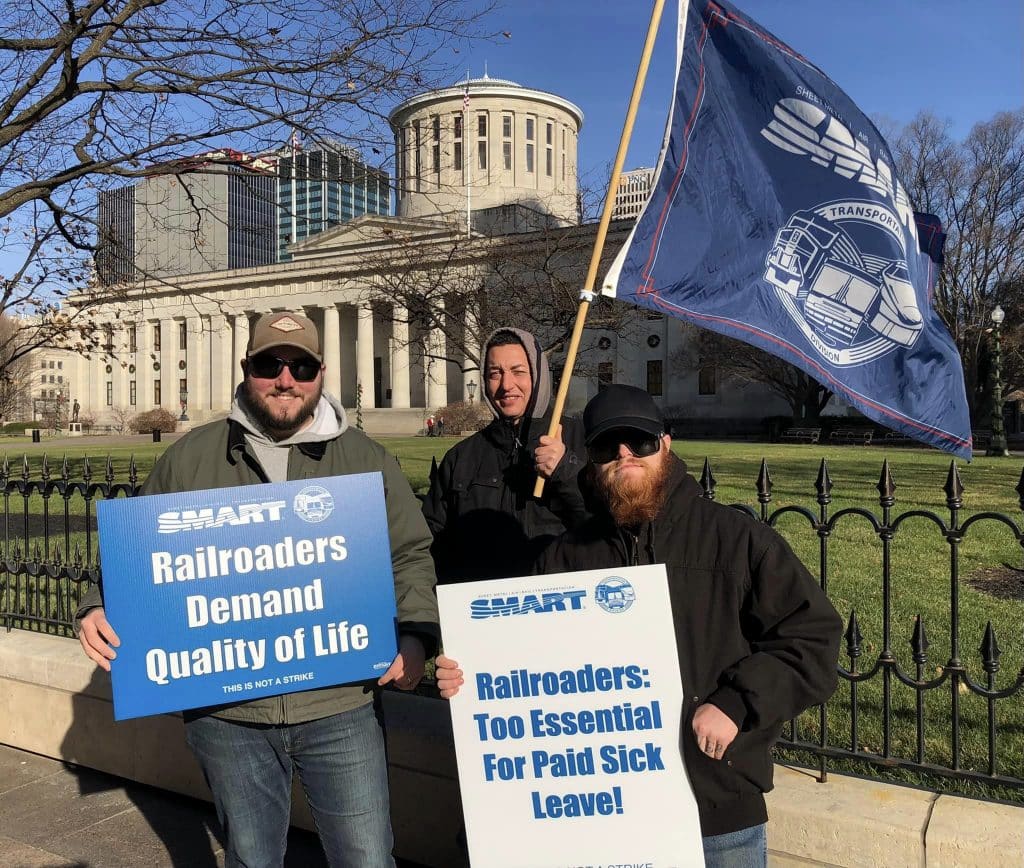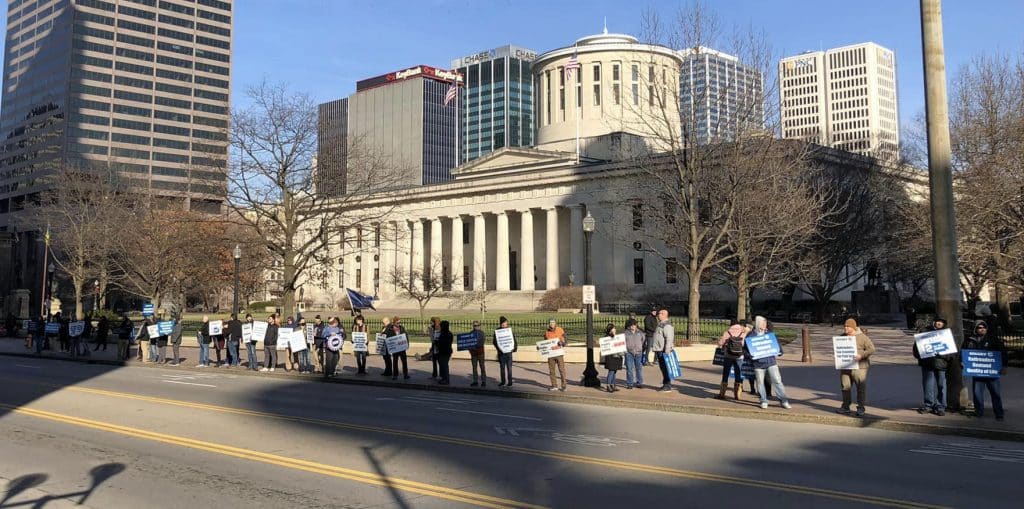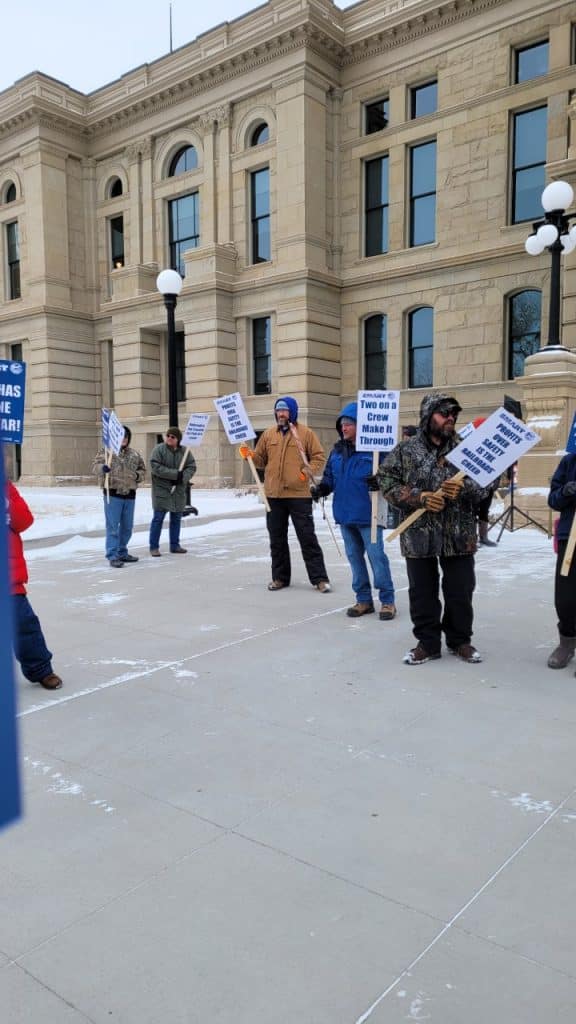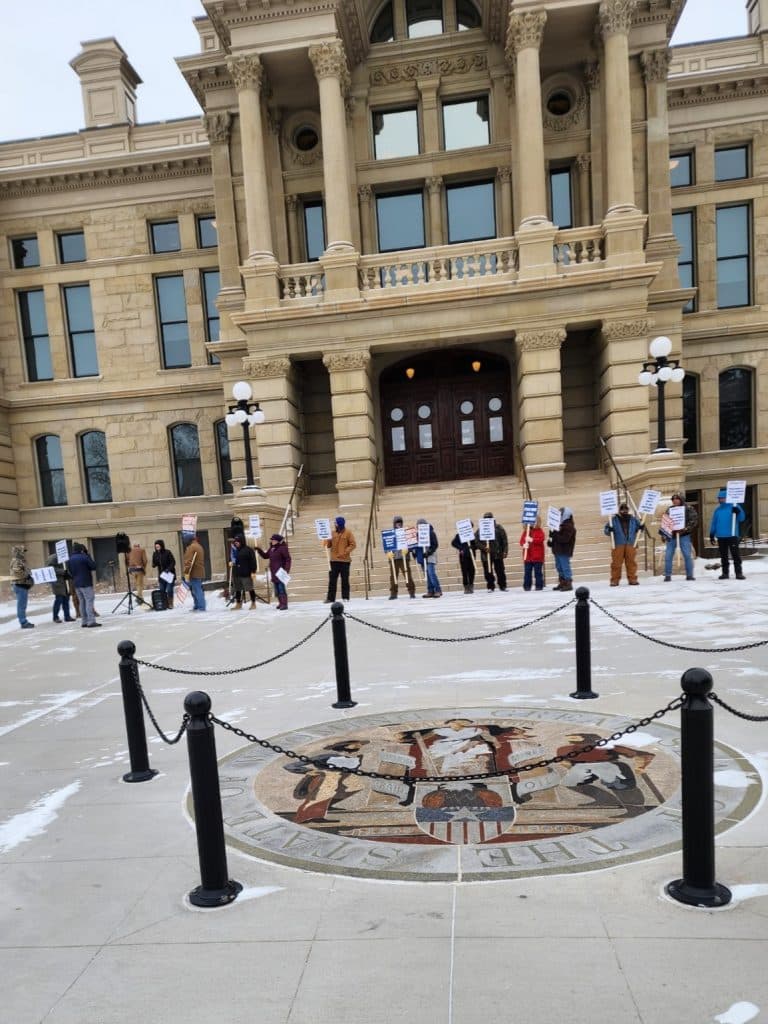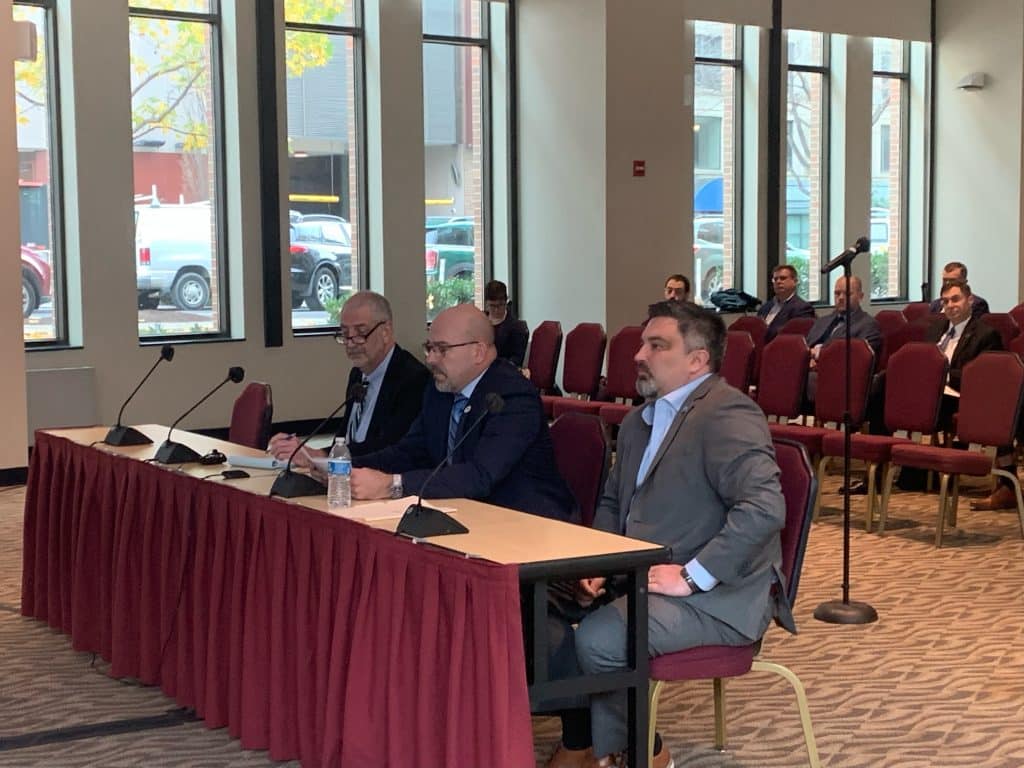The Federal Railroad Administration published a safety bulletin Dec. 29 regarding an unintended release of a train’s air brakes while stopped at a signal. The text of the advisory as published in the Federal Register is reproduced below.
FRA is issuing Safety Advisory 2022-02 to make the rail industry aware of a recent issue encountered by a train crew that experienced an unintended brake release of a train’s automatic air brakes while stopped at a signal, and to recommend steps addressing the unintended release of train air brakes.
Background
On June 22, 2022, during a significant thunderstorm, a crew consisting of a locomotive engineer and conductor operated a conventionally powered, intermodal train with 3 head-end locomotives, 47 loaded cars, and 6 empty cars, totaling 9,204 feet in length and 7,392 tons in weight. The engineer stopped the train on a downhill grade of 0.9-1.18% near the signal governing the train’s movement, set the train’s air brakes at approximately 12 pounds, and fully set the locomotive consist’s independent brakes. After being stopped for approximately 3 hours, the engineer and conductor, located in the lead locomotive cab, observed the train roll towards the signal interlocking displaying a stop indication. This train experienced an unintended automatic brake release. The locomotive consist’s independent brakes remained fully applied but due to the grade, tonnage and wet rail could not solely hold the train without the automatic air brakes also being applied.
At that time, an opposing train on the same track was preparing to cross through the interlocking in front of the rolling train. The locomotive engineer of the rolling train applied full-service airbrakes and full dynamic braking but was not satisfied that the brakes were working effectively or fast enough. The conductor operated the emergency brake valve and stopped the train short of the signal and the train that was preparing to cross through the interlocking.
The crew then contacted the dispatcher and railroad management to report the unintended brake release and the conductor set a sufficient number of car handbrakes to hold the train on the grade.
FRA’s investigation of the rolling train’s event recorder, positive train control (PTC) system, and engine data logs, revealed: the PTC system had operated properly and would have initiated an emergency brake application upon reaching the signal; the Trip Optimizer was off; and the lead locomotive and consist did not cause the unintended brake release. Instead, FRA determined that, after approximately three hours with the air brakes set, the air pressure slowly bled down from some of the cars’ auxiliary reservoirs, likely causing localized brake releases.[1] The initiation of the brake release would enable the accelerated release functionality by taking some air from the emergency brake reservoirs and directing it back into the brake pipe resulting in a substantial number of adjacent car brakes releasing. Potentially contributing factors causing the train’s unintended movement included the downhill grade, wet rail, and the train’s tonnage.
Due to the potential for air brake system leaks, FRA prohibits unattended trains from depending solely on air brakes to hold equipment.[2] While the aforementioned rolling train was attended, it nevertheless engaged in an unintended movement.
Based on FRA’s review of this incident, and its awareness of other train incidents involving an unintended air brake release under similar circumstances, FRA believes operating guidance is warranted to help reduce the likelihood of similar unintended air brake releases, and therefore makes the following recommendations.
Recommendations
1. Train crews should not expect a service rate or emergency brake application to indefinitely maintain application of a train’s air brakes.
2. If a train is stopped with air brakes set, and the train begins moving, the crew should immediately apply the emergency brake. After the train is stopped, the crew should set a sufficient number of handbrakes to secure the train from further unintended movement before releasing the brakes and recharging the train’s air brake system.
3. Each railroad should adopt and implement an air brake procedure consistent with Recommendations 1 and 2 that addresses unintended brake releases.
4. Each railroad should have an operating supervisor conduct a face-to-face meeting with each locomotive engineer and conductor to explain and reinforce the contents of this advisory.
FRA may modify Safety Advisory 2022-02, issue additional safety advisories, or take other appropriate necessary action to ensure the highest level of safety on the Nation’s railroads.
Issued in Washington, DC.
John Karl Alexy,
Associate Administrator for Railroad Safety, Chief Safety Officer.
Footnotes
1. FRA notes this type of prolonged pressure release would likely not be identified during a periodic single car air brake test. Back to Citation
2. 49 CFR 232.103(n)(2). Back to Citation
